Authors:
Rob Kerwath, Sr. Technical Director
David Fertik, Creative Director
For three decades, OBE has been pushing boundaries, breaking new ground, and crafting experiences that move people. To celebrate this anniversary milestone, we’re launching Pearls of Wisdom—a content series sharing the expertise, strategies, and creative problem-solving that have shaped our work. These insights aren’t just about where we’ve been; they’re about where experience design is going.
First up: Lighting
Lighting is one of the most underestimated tools in the experiential design toolbox. At its best, lighting isn’t just functional—it’s emotional, strategic, and transformative. It’s what gives a space life, mood, and clarity. Whether you’re launching a brand, hosting an executive summit, or crafting a festival experience, lighting is what connects people to the moment.
As a Creative Director and a Technical Director who collaborate on everything from concept to execution, we’re here to share how lighting can elevate your work—and why it should be part of your creative thinking from day one.
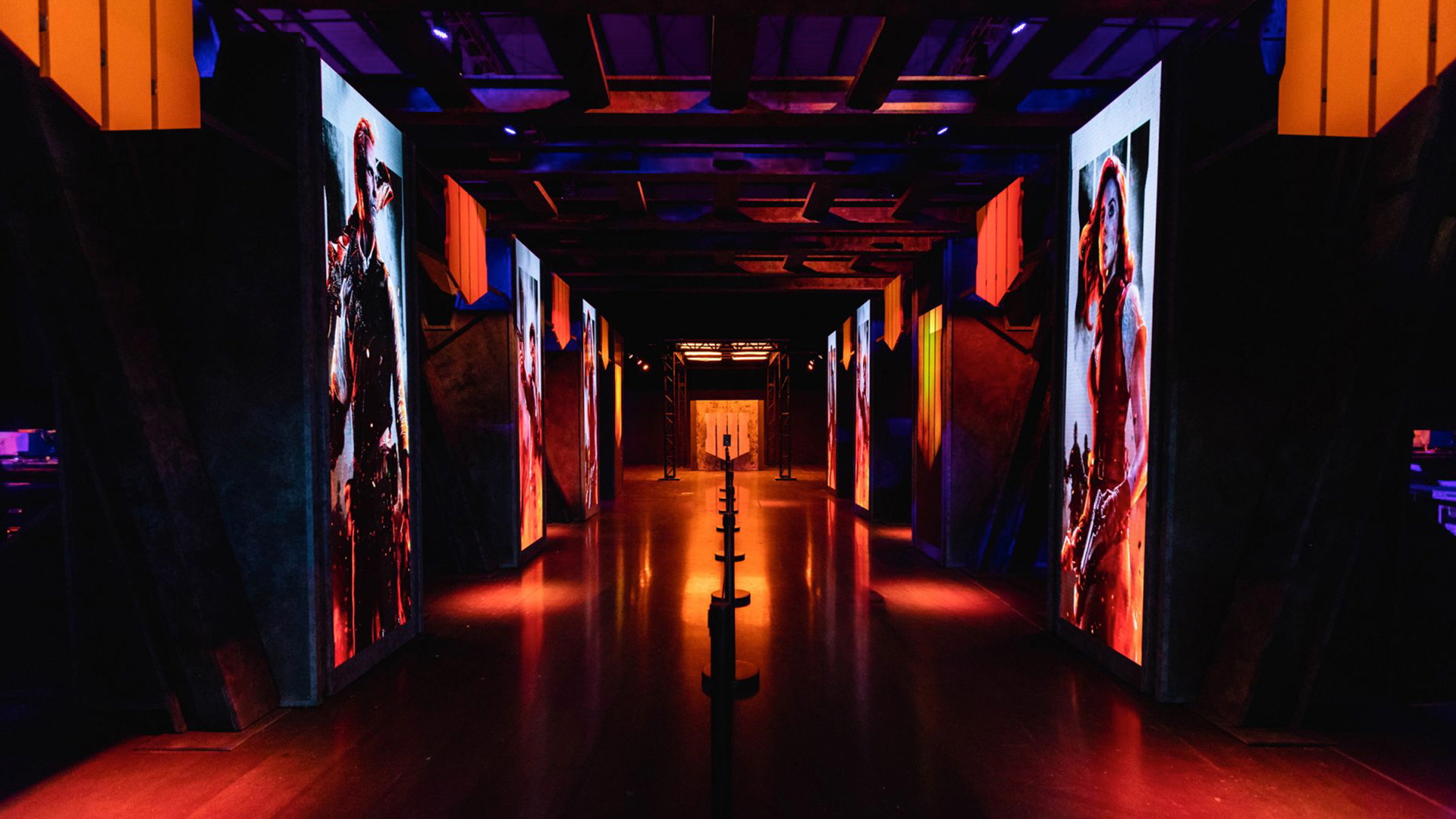
Lighting is your mood board.
Lighting creates atmosphere. It sets the emotional temperature of a room faster than any scenic or graphic element. Want a space to feel high-energy? Warm tones, motion, and sharp contrast will do the trick. Want something calm and grounded? Go cool, soft, and static.
Pro Tip: Think of light as an active layer in your brand storytelling. Don’t just match the brand colors—match the brand emotion.
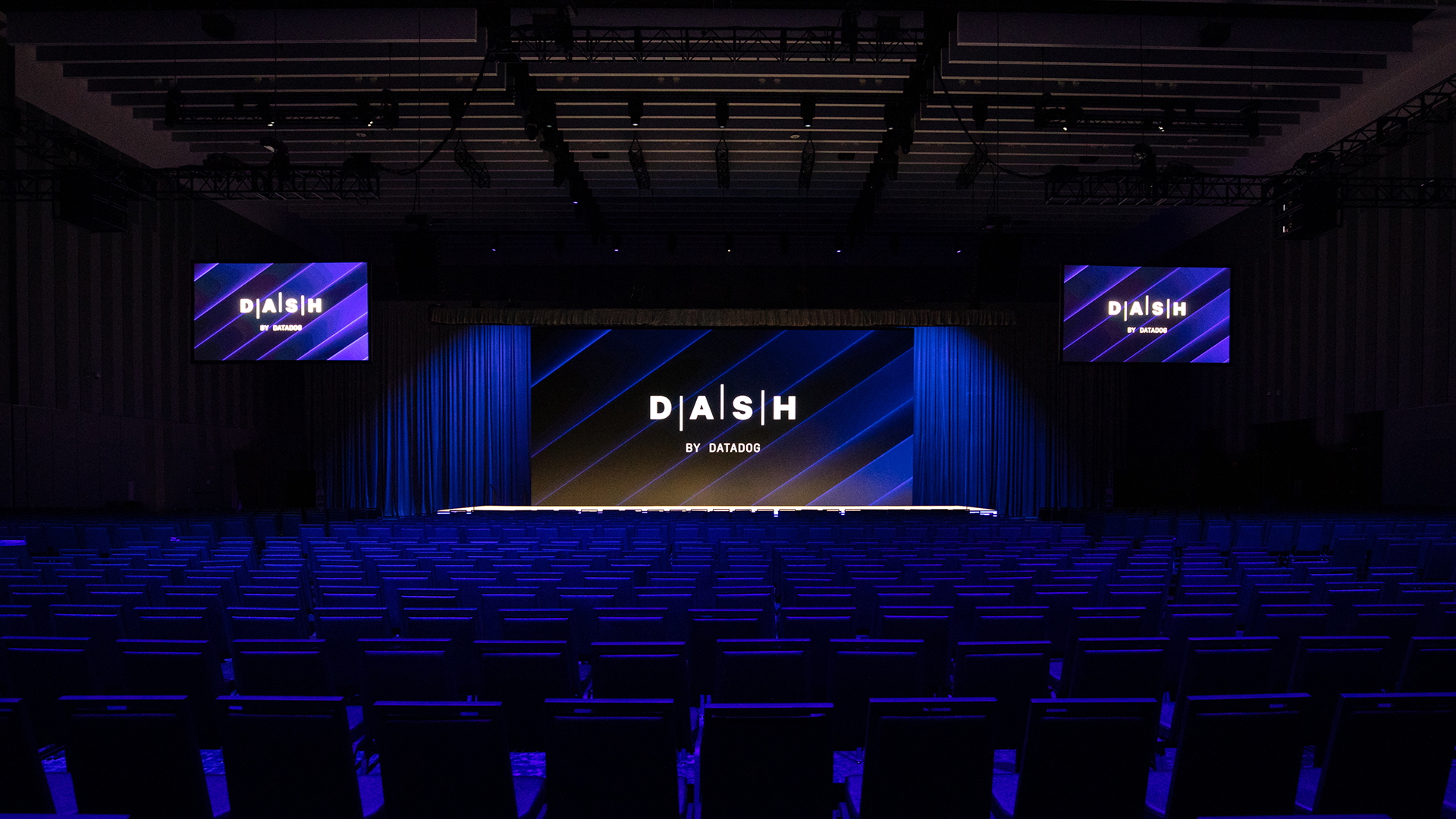
It's the most flexible (and forgiving) design tool.
Modern lighting is programmable, energy-efficient, and incredibly responsive. With LED fixtures and smart controls, you can shift scenes, change tone, and direct attention at the push of a button. It’s a dynamic element that lets you pivot in real time—whether to fix an issue or elevate a moment.
Trick: Pre-program a few lighting “scenes” to keep your event flowing visually. Even small changes can keep an experience feeling fresh and intentional.
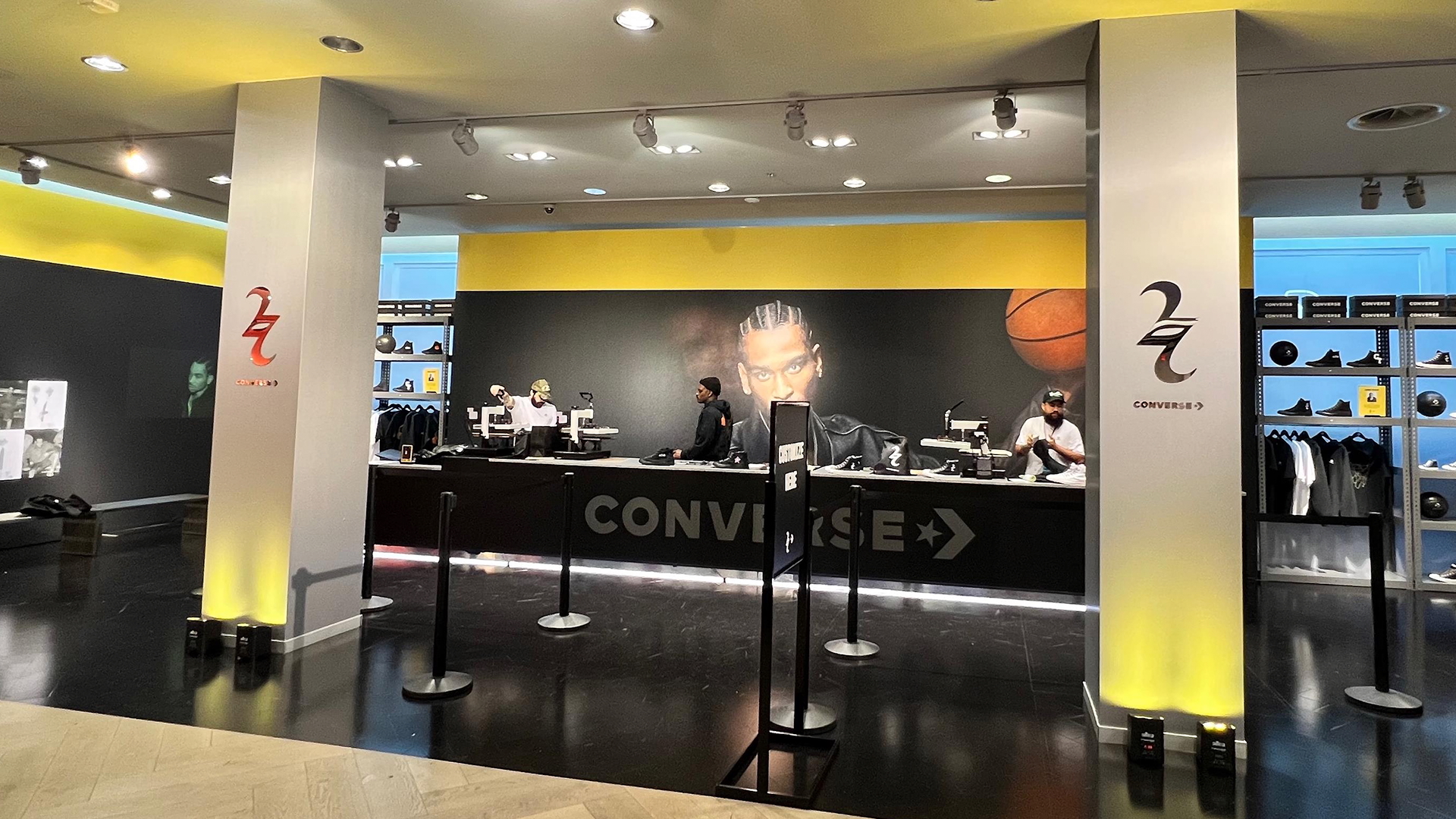
Lighting is a problem solver.
We’ve been in the field long enough to know: the best fix is often light. Weird shadows on a display? Empty space that needs filling? Brand moment not popping? Lighting can resolve spatial challenges faster than a reprint or rebuild.
Pro Tip: Sometimes lighting isn’t just the fix—it’s the smarter idea from the start.
Case Study: During the NBA All-Star Game weekend, Converse asked for a sleek pedestal to display basketballs—needed within 12 hours. But when we paused to ask what the pedestal was really solving for, the answer became clear: it was about masking negative space in front of a structural column. Instead of forcing a rushed build, we threw a few uplights on the column and instantly created a clean, intentional focal point. It worked better than any physical object would have.
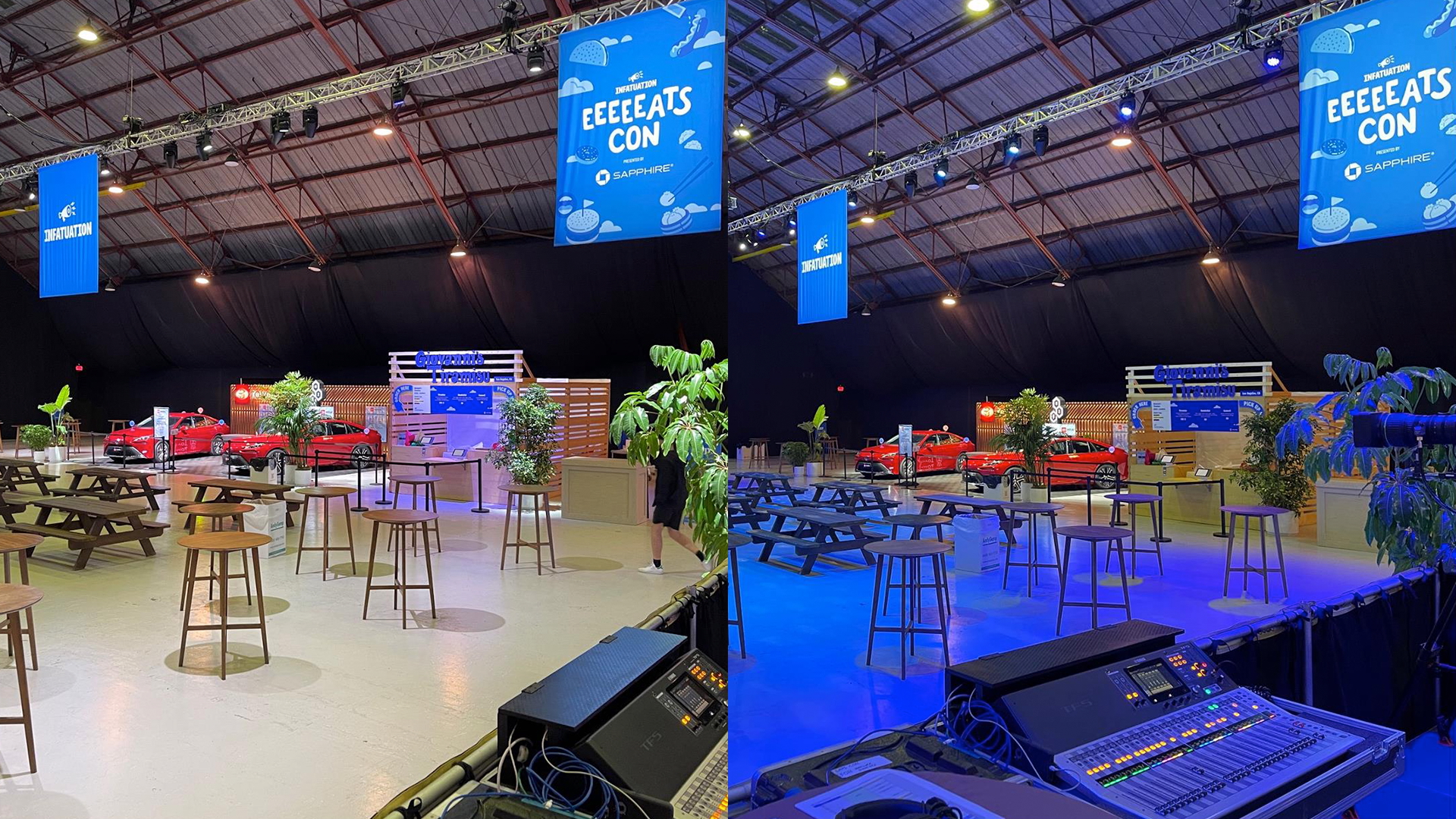
Balance is key: Not too hot, not too cold.
Too little light? Guests can’t see or engage. Too much? The space becomes washed out and flat. The art is in the balance—layering ambient, focal, and accent lighting to build a cohesive visual experience.
Pro Tip: Think like a cinematographer. Where do you want the eye to go? What story does each pocket of light tell?
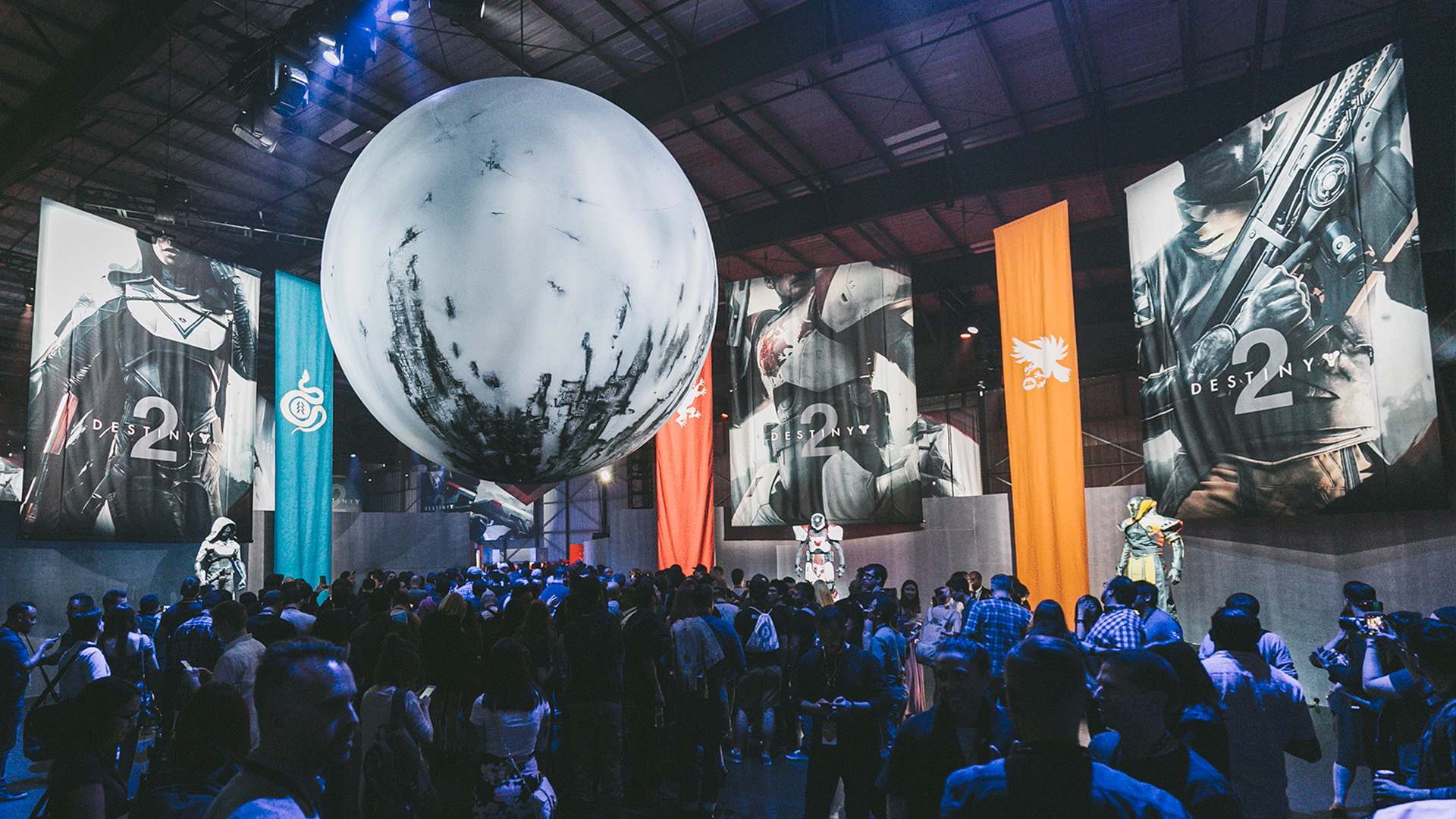
Color, texture and movement are your allies.
Lighting doesn’t just illuminate—it sculpts. You can paint with light, cast texture onto surfaces, and build immersive color stories that subtly shift across an event timeline. These techniques help create environments that feel alive.
Pro Tip: Color in lighting behaves differently than it does in print—what looks perfect on a mood board might feel off in real life. Don’t aim to match printed signage—plan to complement it and build in time for live adjustments to get it just right onsite.
Use It Wisely:
- Color temperature: Affects mood more than you think. Warmer color temperatures tend to evoke feelings of coziness, relaxation, and comfort, while cooler color temperatures can increase alertness, focus, and energy.
- Texture: Gobos and soft lights can add depth to bland walls or stage backdrops.
- Movement: When used sparingly, it draws attention. When overused, it distracts.
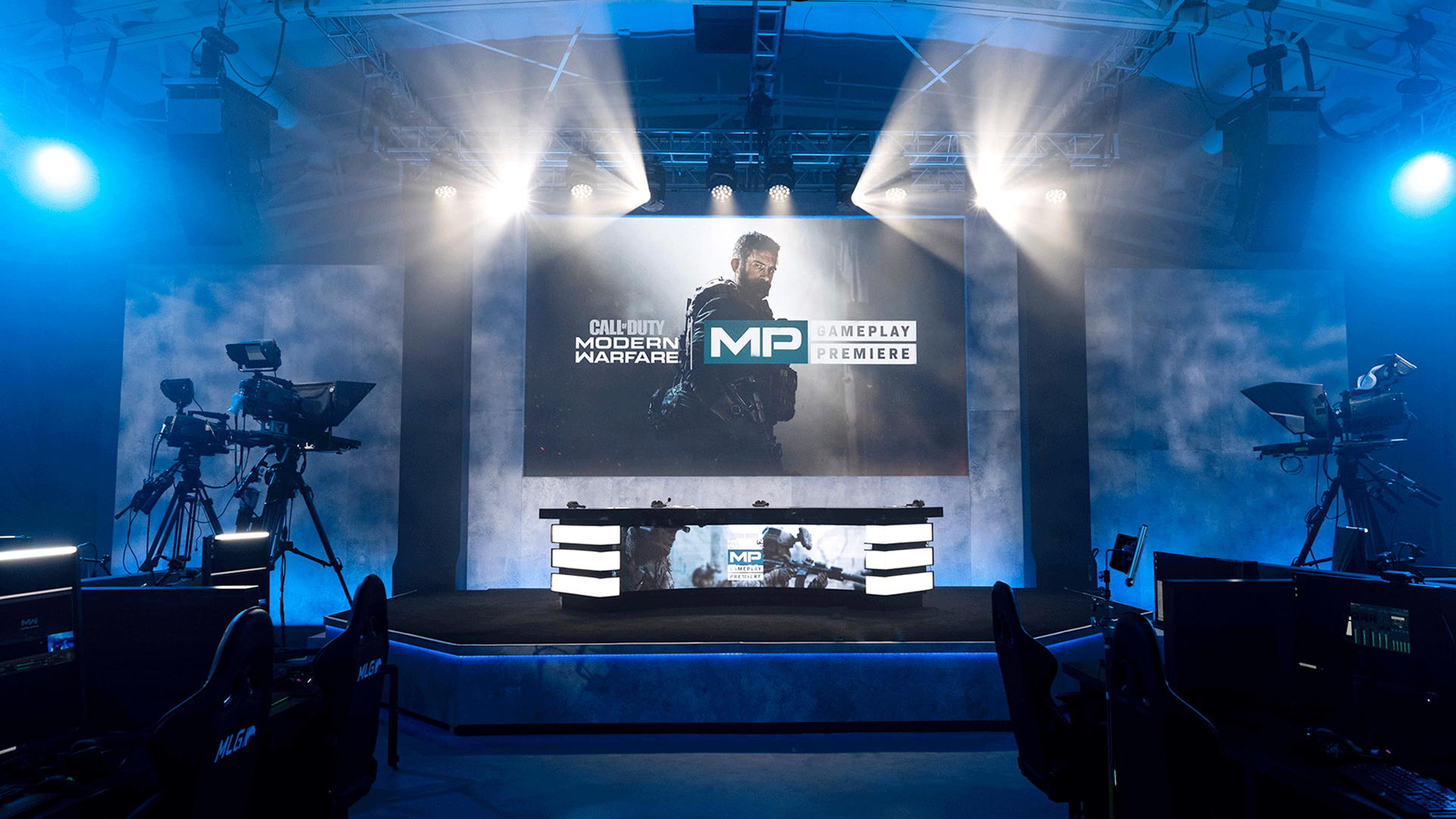
Power planning = Creative freedom
Even the best lighting plan falls apart without solid power strategy. Today’s tech may be efficient, but it still requires planning—from cable runs to backup systems. No one notices lighting when it’s working beautifully. But when it fails? It’s the only thing they remember.
Checklist:
- Map your power loads and cable paths early.
- Have a redundant power plan (especially for hero moments).
- Build in room for late changes—we promise, they’re coming.
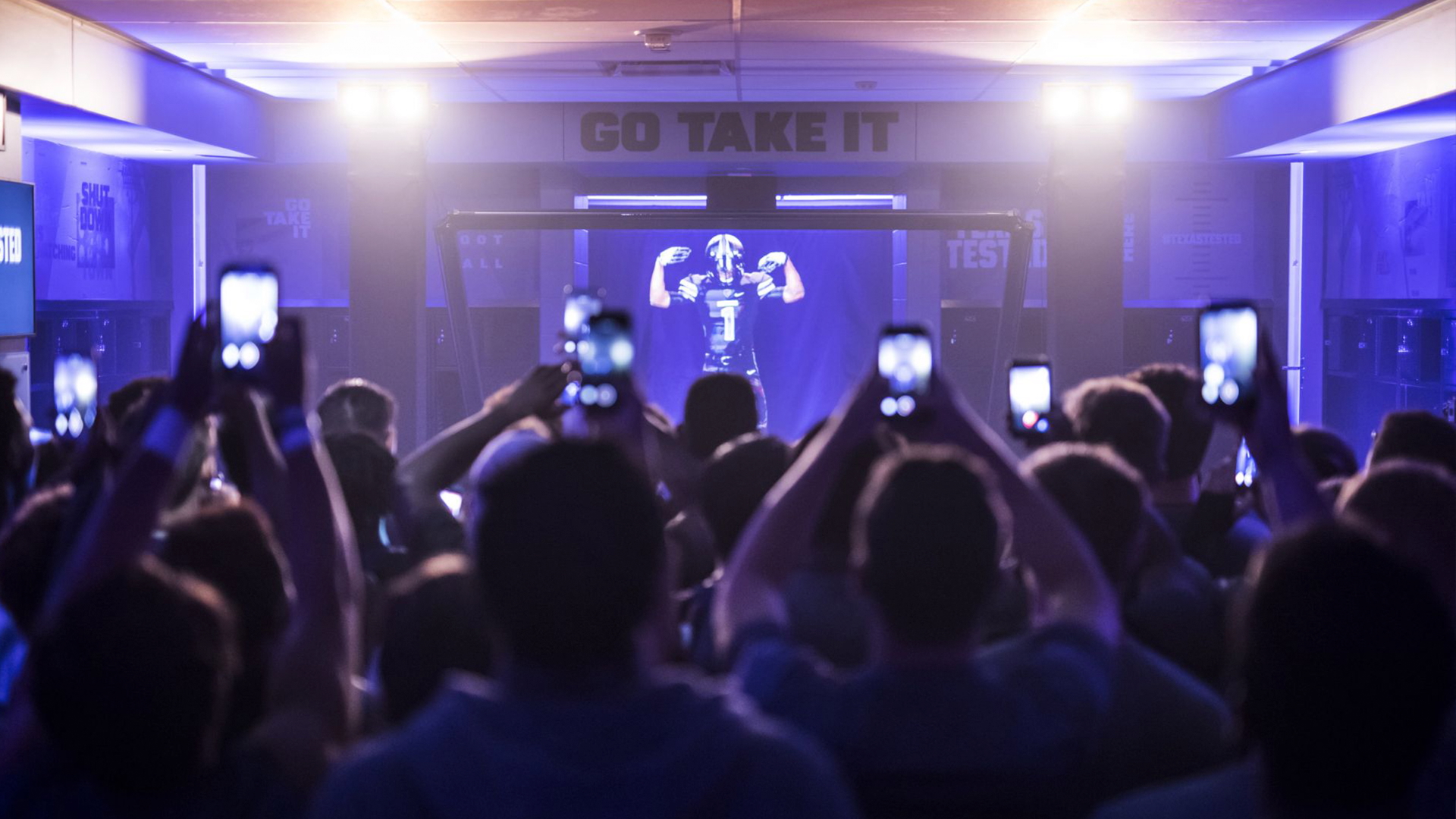
Lighting belongs in creative conversations early.
Lighting isn’t a finishing touch—it’s a foundational design layer. The earlier it’s integrated into the creative process, the more impactful (and seamless) it becomes. Want a moment to truly land? Let lighting carry part of the story.
Collab Model: At OBE, we approach lighting as a joint creative-technical effort. Creative sets the vision, technical brings it to life—and together, we shape experiences that feel intentional from the first frame to the final fade.
Lighting is the magic you didn’t know you needed.
Great lighting doesn’t just light a room. It creates feeling, reveals focus, hides flaws, and transforms everything it touches. In a world where attention is scarce and expectations are high, lighting is one of the most versatile, cost-effective, and emotion-rich tools you can use.
So next time you’re concepting an experience, ask yourself not just how will it look?—but how will it feel when the lights come on?
